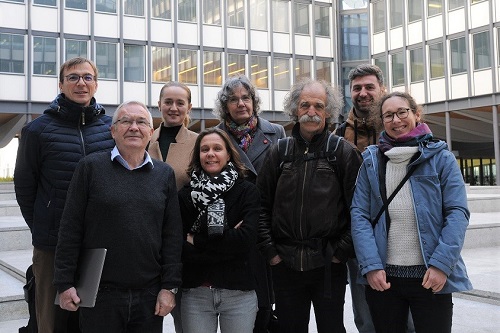Internal and external constraints of the vocal apparatus in humans and non-human primates and application to fossil hominins
The emergence of speech capability within human evolution is one of the most exciting topic and debated question. Recently the paradigm has totally changed due to works which have evidenced that several non- human primates are anatomically “speech-ready” and that a low position of the larynx in the vocal apparatus is not necessary to produce vocalization. To contribute to this question, our project aims at defining whether the geometry of the vocal tract determines the capacity for language. This will imply:
- to quantify uncertainties in the simulations using an analytic meta-model able to generate a very large number of realistic model tongue shape from a reduced number of simulations with the biomechanical model;
- to deliver a motion capture’s sensors of the head during vocalization and long duration session, at least 24 hours (for the biomechanical application),
- to find a process to deal with more than 1000 records of vocalizations (big data).

Scientific Coordinator

Dr. Amélie Viallet,
UMR 7194, CNRS, Sorbonne Université, MNHN
UMR 7194, CNRS, Sorbonne Université, MNHN
Collaborations
Major research units connected with the team:- UMR 7194, histoire naturelle de l’Homme préhistorique, CNRS, Sorbonne Université, MNHN
- Mecadev, UMR 7179, CNRS, Sorbonne Université, MNHN
- CR2P, UMR 7207, CNRS, Sorbonne Université, MNHN
- JLRA (laboratoire Jean Le Rond d’Alembert), UMR 7190, CNRS, Sorbonne Université
- BMBI, UMR 7338, CNRS, UTC
- Gipsa-lab, UMR CNRS 5216, Grenoble INP
- TIMC-IMAG, UMR CNRS 552, Univ. Grenoble Alpes
- Morpheo, Inria Grenoble Rhône-Alpes
